
Layout, design and features …
The size is very compact for the 1500 watt output. Even the length of 180 mm allows installation in most standard housings.
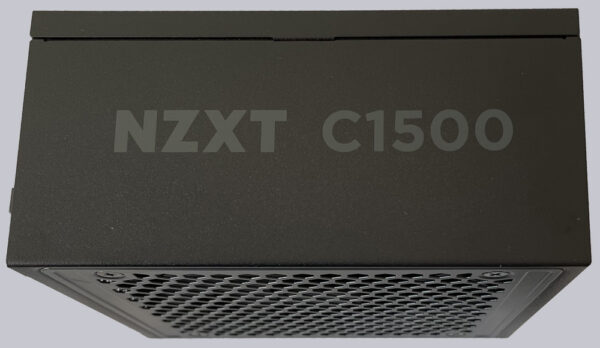
The mains connection and an on/off switch are located on the rear of the housing. The mains connection plug is a special feature of this PSU. The so-called IEC 320 C19 is designed for higher outputs than the familiar IEC plug. As a further special feature, there is also a button for a zero-fan mode, which enables silent operation at low power consumption. The fan only kicks in when temperatures rise.
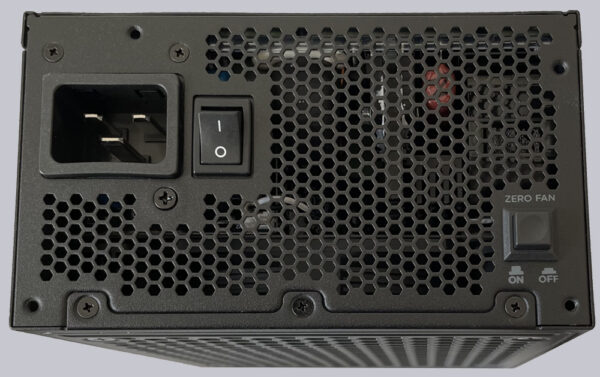
The 140mm fan features magnetic levitation technology, which enables whisper-quiet operation, high airflow and a long service life.
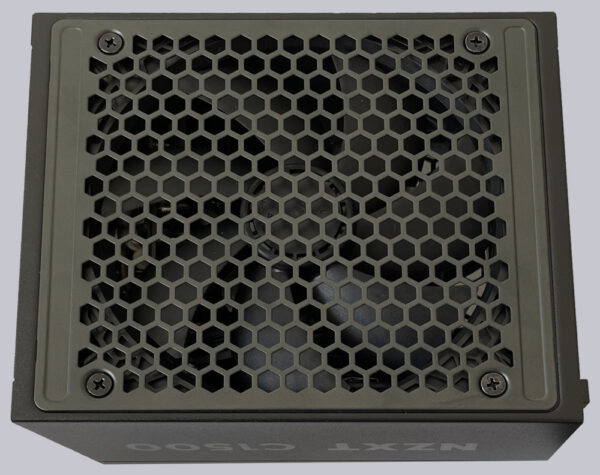
The front side has a large number of connections. The connection labels allow the correct connection cables to be fitted quickly.
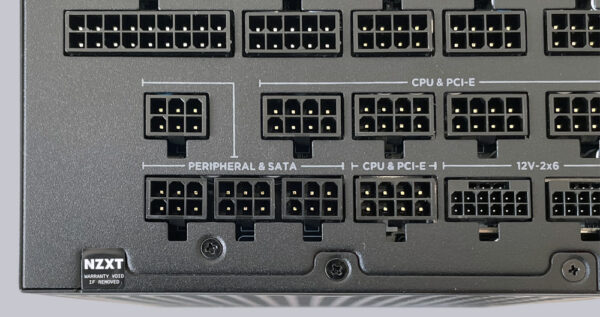
This is a fully modular PSU. This means that all connection cables are detachable. This makes installation easier and allows for individual customization.
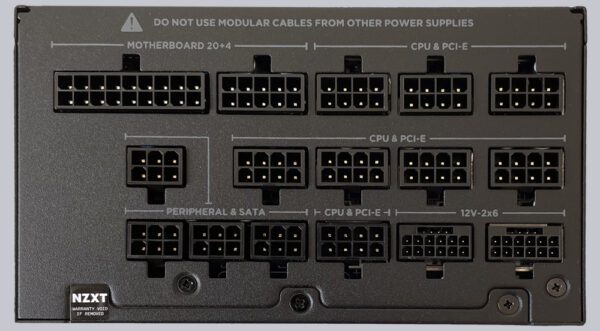
Another special feature of the PSU is that it is possible to operate two graphics cards, each with a 600 watt PCIe 5.1 HPWR connection.
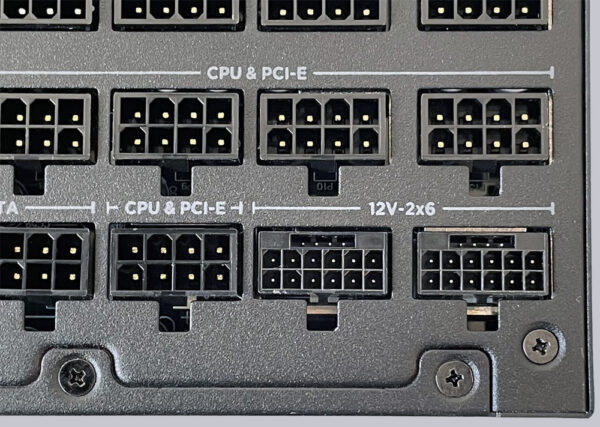
The PSU has an 80 Plus Platinum certification. However, NZXT shows in its documentation that the C1500 even meets the even higher 80 Plus Titanium standard for many loads.
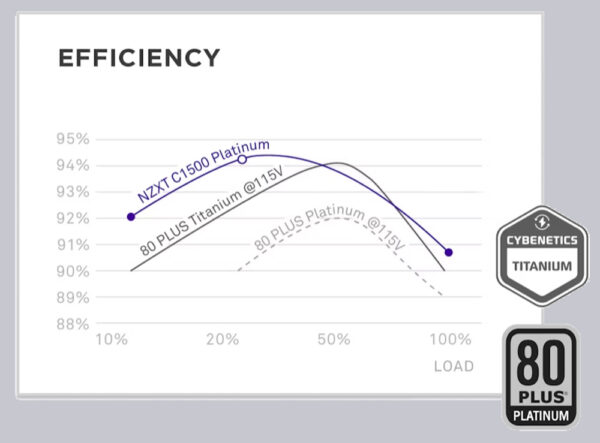
In order to assess the quality of the components and workmanship, we opened the NZXT C1500, which of course should not be done without technical expertise. This will also invalidate the warranty.
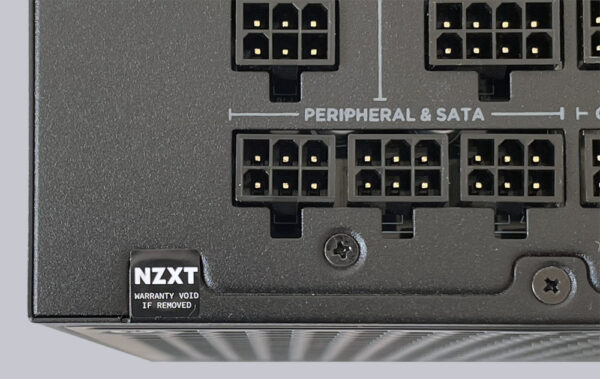
As can be seen here, the PSU has three large capacitors that are used for voltage stabilization and filtering. The installed capacitors are of high quality and designed for temperatures of up to 105 degrees Celsius. All components are in excellent condition and essential to guarantee the specified wattage.
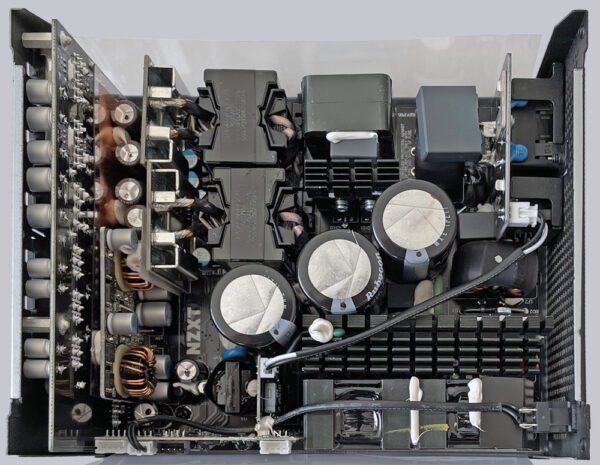
We also see the heat sinks, which provide sufficient cooling for the voltage converters. These have an integrated temperature sensor, which enables effective cooling control. The soldering work is of excellent quality; there are no cold solder joints, which indicates careful workmanship. Unfortunately, we nevertheless found that the cables visible in the image area are not fully tinned up to the insulation and are therefore more susceptible to corrosion. Beyond this, no other anomalies can be seen.
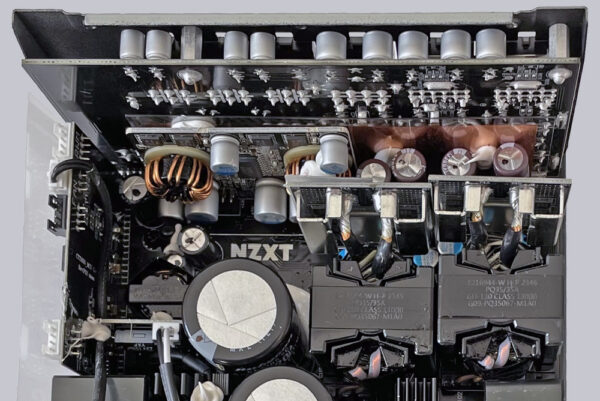
A control board for temperature and fan control is located on the side.
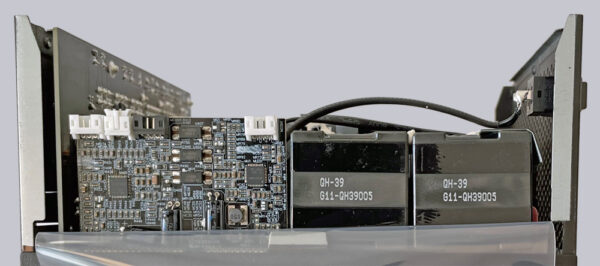
Equipped with a Sunon MagLev MFE0251VX DC12V fan with 4.97W, which is regulated via PWM control (pulse width modulation).
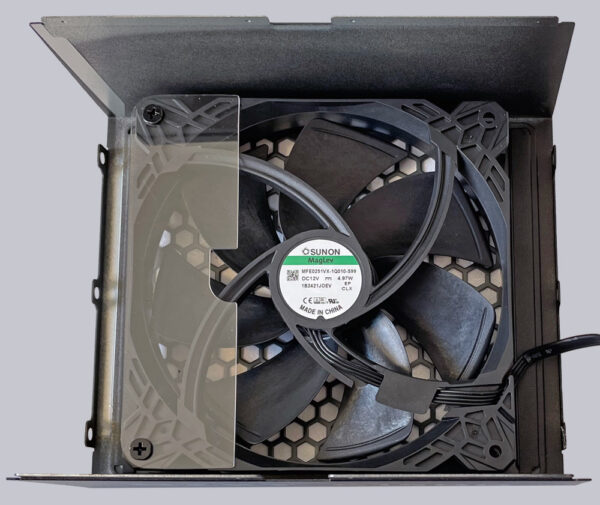
Now we come to the practical testing, in which we install the NZXT C1500 in our system network.
NZXT C1500 Practical testing …

